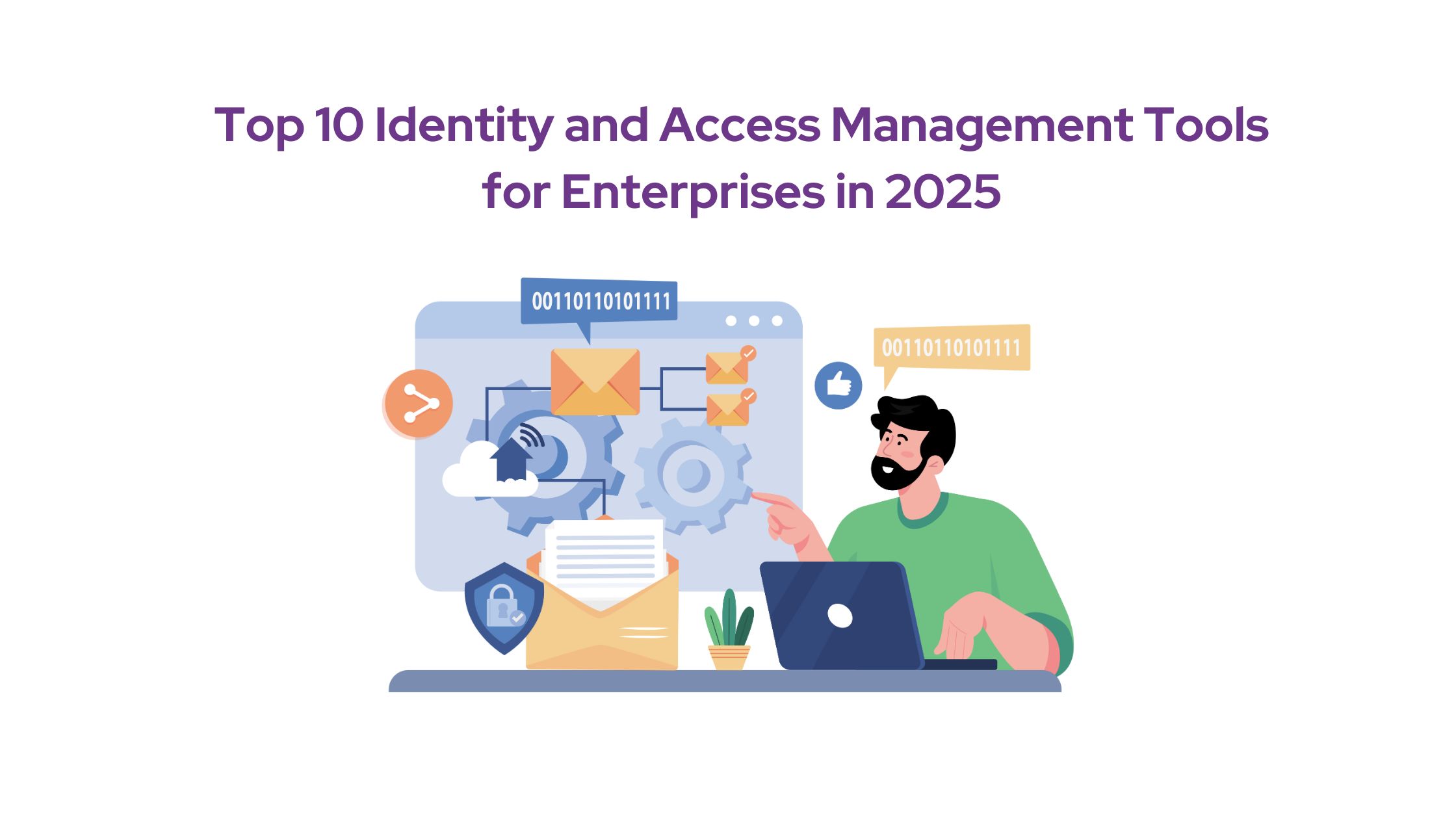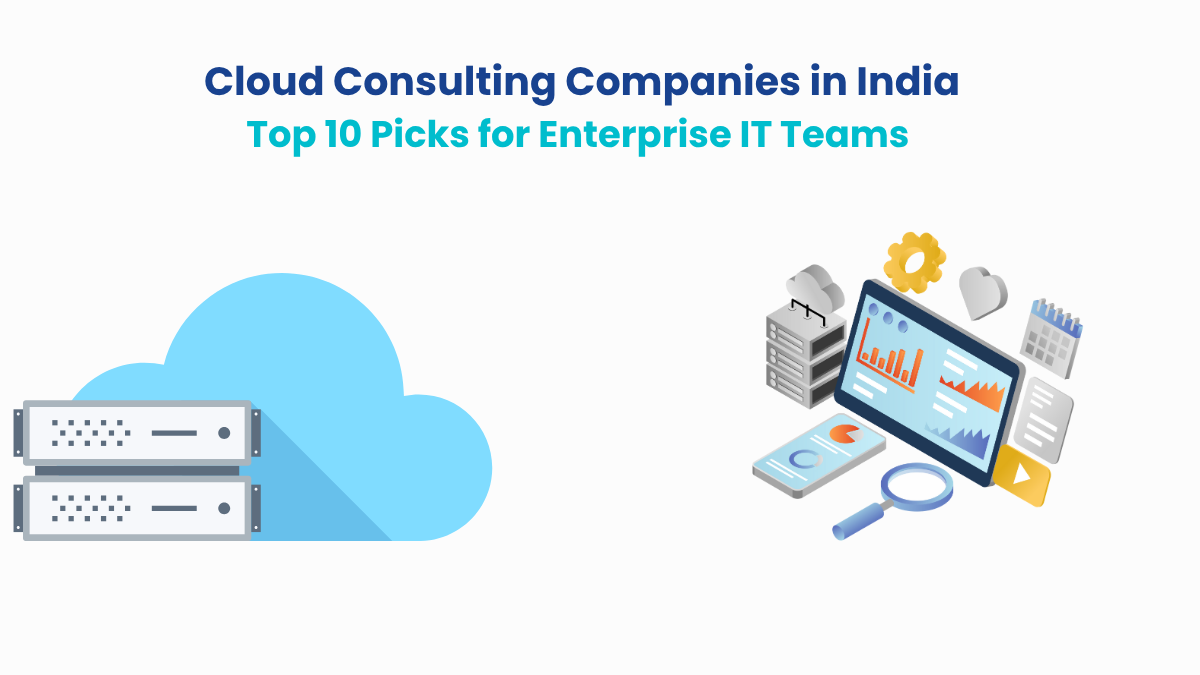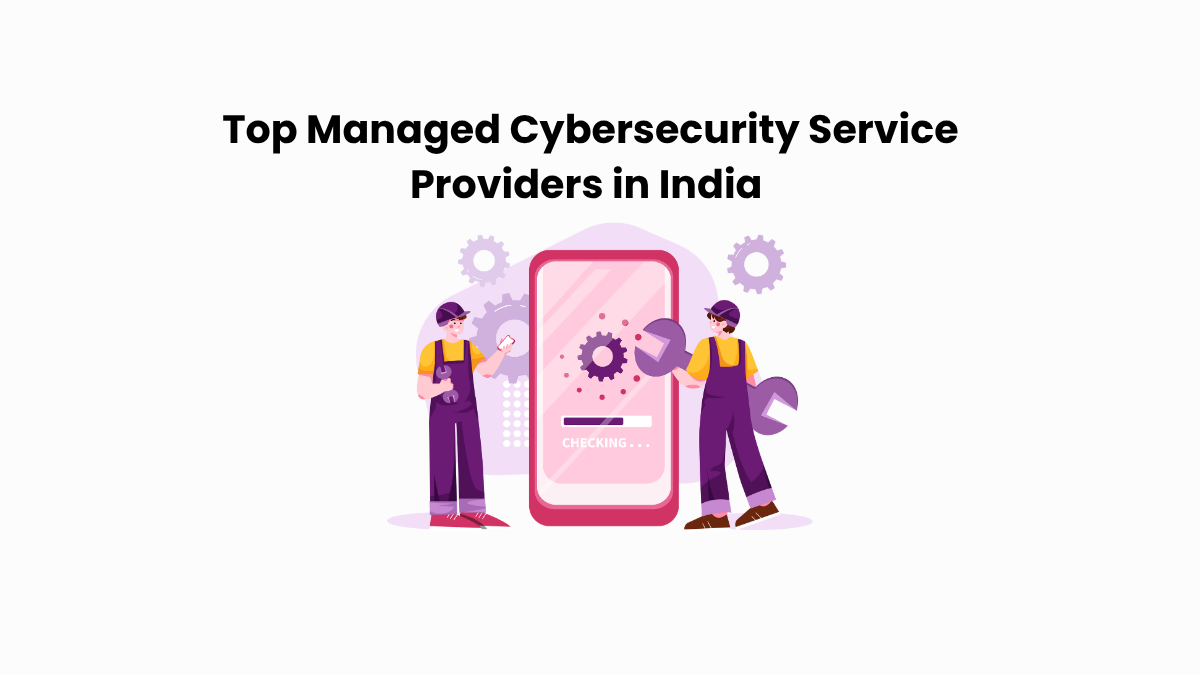Identity is the new perimeter. And when it breaks, it breaks everything. IBM’s 2024 Cost of a Data Breach Report found that stolen or compromised credentials were the most common cause of breaches, responsible for 16 percent of incidents and averaging 4.81 million dollars in damages.
As organizations embrace hybrid work environments and expand across multi-cloud infrastructures, strong identity and access management tools are no longer optional. They are the foundation of Zero Trust security and the frontline defense against unauthorized access.
This article is your expert guide to the top 10 identity and access management tools trusted by global enterprises. Whether you’re modernizing access controls, ensuring compliance, or building a Zero Trust framework, these platforms offer the scalability and precision to protect what matters most.
Let’s explore the top 10 identity and access management tools shaping enterprise security in 2025. But before we get started, let’s take a look at the core capabilities of these IAM tools so you can choose the right one for your business.
Core Capabilities of Top 10 Identity and Access Management Tools
When organizations search for the top 10 identity and access management tools, one of the first questions they have is: “What do these tools actually do?”
This section lays out the foundational functions and capabilities that distinguish leading identity and access management tools in today’s complex security landscape.

#1. Robust Authentication and Multi-Factor Authentication (MFA)
Identity and access management tools ensure that only verified users gain entry by enforcing strong authentication measures. They often support multi-factor authentication, which combines passwords with additional verification methods, such as biometrics or hardware tokens, to reduce the risk of unauthorized access.
#2. Comprehensive Single Sign-On (SSO) Capabilities
These tools enable users to access multiple applications and services with a single set of credentials. This not only enhances security by centralizing authentication but also improves user experience by reducing the number of login prompts across cloud, on-premises, and hybrid environments.
#3. Automated User Provisioning and Lifecycle Management
Identity and access management tools streamline the processes of onboarding, updating, and offboarding users. By automating account creation, role assignments, and access reviews, these tools reduce administrative overhead and minimize human error, ensuring that access is always up-to-date with current organizational roles.
#4. Granular Access Control and Authorization
They provide the ability to define and enforce detailed access policies. This means that access rights can be tailored according to roles, departments, or even individual user behavior. Such granular control ensures that only the necessary permissions are granted, reducing the potential attack surface.
#5. Comprehensive Identity Governance and Compliance Reporting
Advanced reporting capabilities are built into these tools, offering detailed audit trails and logs of user activities. This is essential for meeting regulatory requirements and ensuring accountability, as it simplifies compliance with standards such as GDPR, HIPAA, and ISO 27001.
#6. Seamless Integration with Enterprise Security Ecosystems
The most effective identity and access management tools integrate smoothly with existing systems such as SIEM, firewalls, VPNs, HR systems, and other critical security applications. This integration creates a unified security posture where data flows freely and securely across your infrastructure.
#7. Context-Aware and Risk-Based Access Management
Leading tools incorporate real-time analytics to evaluate risk. By assessing factors like user behavior, device health, and network context, these tools enable dynamic access decisions that adapt to changing threat landscapes.
Together, these core capabilities make identity and access management tools not just a security accessory, but a critical component of an organization’s overall defense strategy. They transform identity from a potential vulnerability into a powerful asset for secure, efficient, and compliant operations.
What Most Enterprises Get Wrong About Identity and Access Management?
Understanding the core capabilities of identity and access management tools is only the beginning. The real challenge lies in how these tools are implemented, scaled, and maintained in dynamic enterprise environments.
Deploying an enterprise identity and access management solution is not the same as building a secure identity framework. Too many organizations treat it like a one-time setup, then forget about it until something breaks.

Here are five common mistakes even experienced security teams make:
- Assuming MFA is enough: Multi-factor authentication is important, but it is not a complete identity strategy.
- Overlooking privileged accounts: Admin and service accounts often go unmanaged, becoming prime targets for attackers.
- Choosing IAM tools that do not scale: What works for a hundred users often collapses under ten thousand.
- Ignoring integration complexity: Identity and access management tools that do not sync well with existing systems create operational gaps and user frustration.
- Skipping governance and lifecycle management: Without automation and audit trails, compliance becomes a nightmare waiting to happen.
The cost of getting IAM wrong is not just operational; it is reputational and financial.
What to Look for in an Identity and Access Management Tool?
Every identity and access management tool promises security. But not every platform can protect your enterprise the way you need it to.

Here’s what truly separates the top identity and access management tools from the rest and why it matters:
- Support for Zero Trust principles: If your identity and access management tool cannot enforce least privilege, continuous verification, and identity-based access, it is already outdated. Zero Trust is no longer a concept. It is the security baseline for modern enterprises.
- Compatibility with hybrid and multi-cloud environments: Your workforce is everywhere. Your apps are everywhere. Your IAM solution should work across cloud, on-prem, and everything in between without breaking workflows.
- Built-in privileged access management: Admin accounts are a goldmine for attackers. Your tool must control who gets elevated access, for how long, and under what conditions, with full audit trails and session logging.
- Strong automation and lifecycle governance: Manual provisioning creates bottlenecks. Worse, it leads to orphaned accounts. You should look for tools that automate onboarding, de-provisioning, and access reviews, all tied to roles and policies.
- Regulatory compliance alignment: Whether it’s ISO, HIPAA, GDPR, or internal audit, your identity and access management platform should reduce the burden, not complicate it. Built-in reporting, policy enforcement, and access logs are non-negotiable. Face trouble with getting compliant? These are the signs you need the services of a compliance advisory service.
- Seamless integration with your security stack: IAM is not a silo. Your platform should work smoothly with your SIEM, firewalls, VPN, HR systems, and ticketing tools. If it cannot talk to what you already use, it creates more risk than it solves.
The best identity and access management tools don’t just manage credentials. They become the foundation of enterprise-wide security, visibility, and control.
Recommended Read: Looking to go beyond tools and fully transform your SOC with automation, AI, and identity-centric control? Download the “Five Essential Steps to SOC Transformation” eBook to explore how leading enterprises are scaling identity-driven security operations in a Zero Trust world.
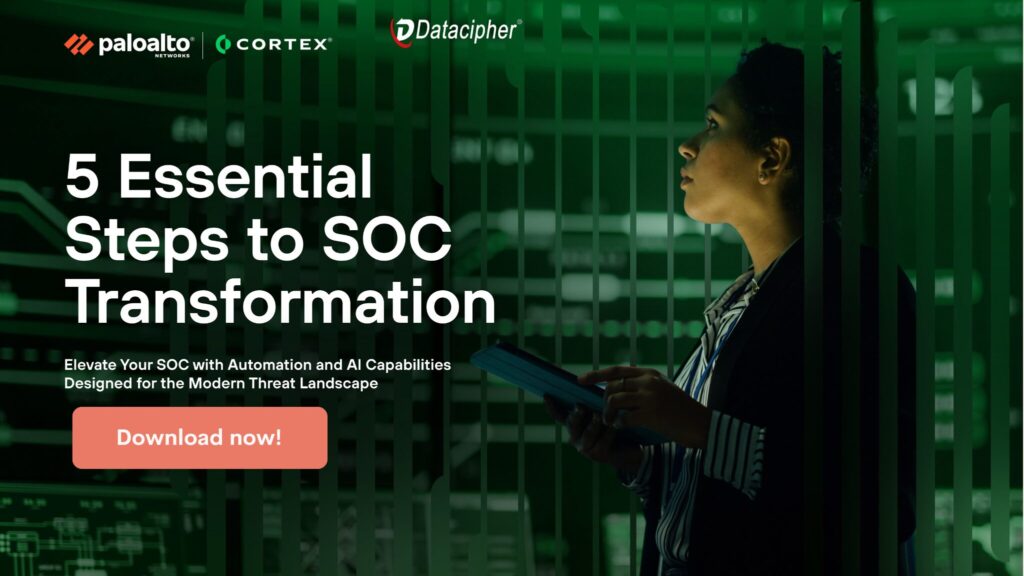
Top 10 Identity and Access Management Tools for Enterprises Leading the Way
You’ve seen what goes wrong. You’ve seen what to look for.
Now it’s time to explore the identity and access management tools that solve these challenges at scale.
The identity and access management landscape is crowded, but not all platforms are built with enterprise-grade resilience, scalability, integration, or governance in mind.
Choosing the right tool is not just about security features. It’s about choosing a platform that works across your hybrid infrastructure, supports compliance mandates, and fits your long-term access strategy.
The following identity and access management tools are trusted by global enterprises, government agencies, and high-compliance industries. Each brings unique strengths, from Zero Trust enforcement to lifecycle automation and hybrid cloud compatibility.
We will break down what each tool does best, who it’s built for, and how it fits into a modern identity-first security strategy.
Let’s start with the one most enterprises already rely on.
1. Microsoft Entra ID (formerly Azure Active Directory)

Source – Microsoft Entra ID
Microsoft Entra ID is one of the top 10 identity and access management tools that thousands of enterprises already operate in the Microsoft ecosystem. It offers seamless integration with Microsoft 365, Azure, and third-party SaaS platforms, making it a natural choice for hybrid and cloud-native environments.
What sets Entra ID apart is its mature support for Zero Trust architecture. It combines conditional access, multi-factor authentication, risk-based sign-in, and identity governance into a single, scalable solution. Admins can automate user provisioning, control access based on real-time signals, and enforce granular policies across all apps and devices.
For enterprises that need both scale and security without disrupting productivity, Microsoft Entra ID delivers.
- Best for: Enterprises already using Microsoft 365 and Azure.
- Deployment fit: Hybrid cloud and large-scale enterprise environments.
- Where it fits best: Environments that require strict Zero Trust enforcement, automated access policies, and seamless integration across Microsoft apps.
- Differentiator: Native integration with the Microsoft ecosystem and enterprise-grade policy scalability.
- Recognition: Leader in 2024 Gartner Magic Quadrant for Access Management.
2. Okta
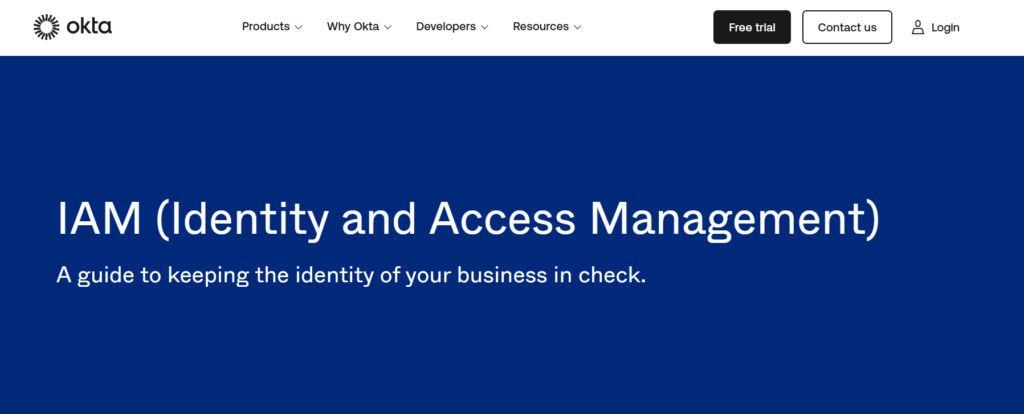
Source – Okta
Okta is a cloud-native identity and access management platform built to simplify and secure user access across any environment. It is especially popular among fast-scaling enterprises and hybrid cloud teams that need agility without sacrificing security.
What makes Okta stand out is its focus on seamless user experiences. With robust single sign-on, adaptive multi-factor authentication, and automated lifecycle management, Okta reduces friction for both end users and IT teams. Its no-code integrations with thousands of applications allow quick deployment across complex ecosystems.
Okta’s identity engine also supports dynamic policies, contextual access control, and deep visibility into user behavior. Whether you are securing internal systems or external customer portals, Okta offers flexibility and speed.
- Best for: Fast-scaling enterprises and hybrid cloud teams that prioritize user experience.
- Deployment fit: Cloud-native, hybrid, and remote workforce environments.
- Where it fits best: Organizations that need quick integrations, automated access control, and adaptive multi-factor authentication.
- Differentiator: Extensive pre-built integrations and a strong focus on seamless user experience.
- Recognition: Leader in the 2024 Gartner Magic Quadrant for Access Management (8th consecutive year).
3. CyberArk
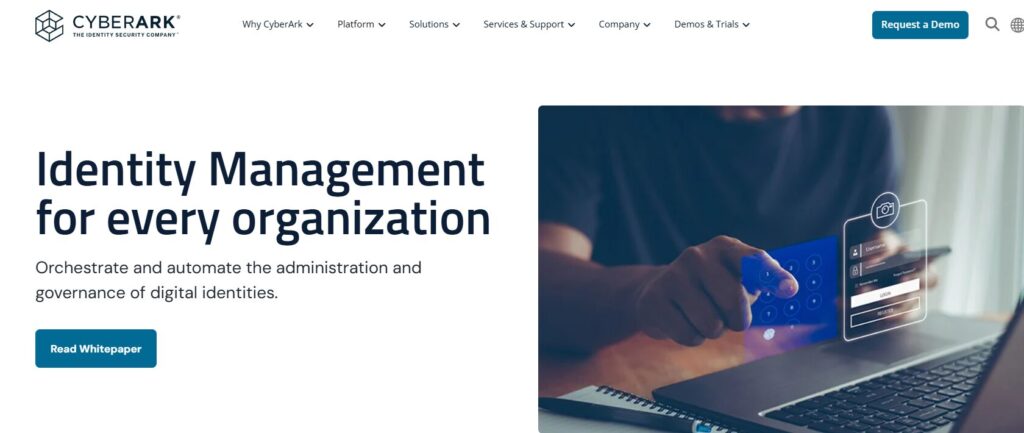
Source – CyberArk
CyberArk is the gold standard for securing privileged access. While some IAM platforms try to do everything, CyberArk focuses deeply on what attackers target most, i.e., high-level credentials and admin accounts.
Its core strength lies in privileged access management. CyberArk helps organizations isolate, monitor, and control access to critical systems, reducing the risk of credential theft and lateral movement. Features like session recording, just-in-time access, and credential rotation make it ideal for high-compliance industries.
Beyond PAM, CyberArk also offers identity security for workforce users, integrating with enterprise IAM and cloud environments to extend Zero Trust principles across the board.
- Best for: Organizations requiring robust security for privileged accounts and administrative access, particularly in high-compliance industries.
- Deployment fit: Suitable for on-premises, cloud, and hybrid environments where securing privileged credentials is critical.
- Where it fits best: Environments that need stringent control over high-level credentials, comprehensive monitoring of administrative activities, and adherence to strict compliance standards.
- Differentiator: Specializes in privileged access management with advanced features like session recording, just-in-time access, and credential rotation, focusing deeply on protecting high-level credentials and administrative accounts.
- Recognition: Recognized as a Leader in the 2024 Gartner® Magic Quadrant™ for Privileged Access Management, marking the sixth consecutive year of leadership.
4. Ping Identity

Source – Ping Identity
Ping Identity is built for enterprises that need secure access across complex environments without compromising user experience. It shines in hybrid IT setups where flexibility, control, and deep integration matter most.
Ping offers a modular IAM platform that includes single sign-on, adaptive multi-factor authentication, identity governance, and API security. It is especially strong in federation and supports open standards like SAML, OAuth, and OpenID Connect, making it a top choice for organizations managing access across partners, customers, and employees.
What sets Ping apart is its ability to handle large-scale deployments with performance and reliability. It gives security teams the control they need while keeping authentication smooth and fast for users.
- Best for: Enterprises requiring secure and seamless access across complex, hybrid IT environments.
- Deployment fit: Ideal for organizations operating in hybrid IT setups that demand flexibility, control, and deep integration capabilities.
- Where it fits best: Suited for large-scale deployments needing robust federation support and adherence to open standards like SAML, OAuth, and OpenID Connect.
- Differentiator: Excels in handling large-scale deployments with high performance and reliability, offering extensive support for federation and open standards.
- Recognition: Recognized as a Leader in the 2024 Gartner® Magic Quadrant™ for Access Management for the eighth consecutive year.
5. IBM Verify

Source – IBM Verify
IBM Verify is a cloud-native identity and access management solution that blends traditional IAM features with modern, AI-driven capabilities. It is designed for enterprises looking to modernize their identity infrastructure without sacrificing control or visibility.
What makes Verify stand out is its intelligent access engine. It uses behavioral analytics, risk-based authentication, and continuous evaluation to make smarter access decisions in real time. This helps reduce identity-related risks while improving the user experience.
IBM Verify supports hybrid cloud environments and integrates with both legacy systems and modern applications. It also includes robust identity governance, lifecycle automation, and comprehensive reporting to support compliance efforts.
For organizations that need enterprise-grade security with AI-powered intelligence layered on top, IBM Verify is a strong contender.
- Best for: Enterprises seeking to modernize their identity infrastructure with AI-driven capabilities without sacrificing control or visibility.
- Deployment fit: Ideal for hybrid cloud environments requiring integration with both legacy systems and modern applications.
- Where it fits best: Organizations aiming to enhance security through behavioral analytics, risk-based authentication, and continuous evaluation for smarter real-time access decisions.
- Differentiator: Utilizes an intelligent access engine that employs AI and behavioral analytics to improve access decisions and user experience.
- Recognition: IBM has been recognized as a Leader in the 2024 Gartner® Magic Quadrant™ for Identity and Access Management.
6. Saviynt

Source – Saviynt
Saviynt is an identity governance and administration platform built for modern enterprises that need granular control over who has access to what and why. It offers a cloud-native approach to managing identities, entitlements, and risk across SaaS, IaaS, and on-prem environments.
What sets Saviynt apart is its ability to unify identity governance, privileged access, and application access into one intelligent platform. With out-of-the-box connectors for popular enterprise systems, Saviynt simplifies compliance reporting, access certifications, and role-based access control.
Its strength lies in reducing risk through context-aware access decisions. Whether you are facing internal audit requirements or external regulations like SOX and GDPR, Saviynt helps ensure that access is both secure and justified.
Enterprises with complex compliance mandates often choose Saviynt for its depth, flexibility, and risk-focused design.
- Best for: Enterprises with complex compliance mandates seeking granular control over identity governance and administration.
- Deployment fit: Ideal for organizations operating across SaaS, IaaS, and on-premises environments that require a unified, cloud-native identity management solution.
- Where it fits best: Organizations aiming to integrate identity governance, privileged access, and application access into a single intelligent platform, simplifying compliance reporting and role-based access control.
- Differentiator: Unifies identity governance, privileged access, and application access into one intelligent platform, with out-of-the-box connectors for popular enterprise systems, enhancing compliance and security.
- Recognition: Recognized as a Representative Vendor in the 2024 Gartner® Market Guide for Identity Governance and Administration. Additionally, honored as a Customers’ Choice in the 2024 Gartner® Peer Insights™ Voice of the Customer report for Identity Governance and Administration, marking the fourth consecutive year of recognition.
7. Oracle Identity Management

Source – Oracle
Oracle Identity Management is a mature, enterprise-grade platform designed to manage user identities, enforce access policies, and support compliance at scale. It is especially valuable for organizations already invested in Oracle’s broader ecosystem.
Its core strengths include automated user provisioning, fine-grained access controls, and integrated governance tools. With support for both cloud and on-premise applications, Oracle Identity Management provides flexibility for hybrid environments.
The platform also supports identity federation, single sign-on, and detailed audit logging to meet security and regulatory requirements. It is built to handle high-volume identity workloads while maintaining strict policy enforcement.
Organizations with complex infrastructure and strict compliance needs often turn to Oracle for its scalability and deep integration capabilities.
- Best for: Large enterprises seeking a comprehensive and scalable identity management solution, particularly those already invested in Oracle’s ecosystem.
- Deployment fit: Ideal for hybrid environments requiring integration across both cloud and on-premises applications.
- Where it fits best: Organizations needing automated user provisioning, fine-grained access controls, and integrated governance tools to manage complex infrastructures and meet strict compliance requirements.
- Differentiator: It offers a unified framework for identity governance, access management, and directory services, with advanced capabilities like Single Sign-On, Multi-Factor Authentication, and device-level authentication.
- Recognition: Oracle Access Management has received positive feedback, with a 4.9-star rating and 98% willingness to recommend from customers.
8. SailPoint
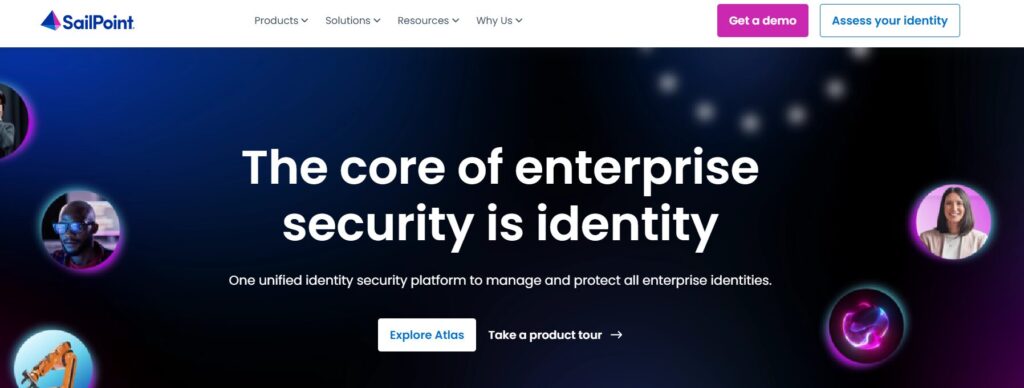
Source – SailPoint
SailPoint is a leader in identity governance, trusted by enterprises that need deep visibility and control over who has access to what and why. It specializes in managing identity risk, enforcing compliance policies, and automating access decisions across complex environments.
The platform uses AI and machine learning to detect abnormal access patterns, recommend least-privilege models, and streamline access certifications. It integrates with thousands of apps and systems, allowing organizations to maintain centralized governance across hybrid cloud and on-prem infrastructure.
SailPoint’s strength lies in its ability to make access both secure and auditable. From role-based access control to intelligent identity lifecycle management, it helps security teams reduce identity sprawl and prove compliance at scale.
Enterprises in finance, healthcare, and highly regulated industries often turn to SailPoint for its depth, intelligence, and governance-first approach.
- Best for: Enterprises in highly regulated industries such as finance and healthcare that require deep visibility and control over user access to ensure compliance and security.
- Deployment fit: Ideal for complex environments encompassing hybrid cloud and on-premises infrastructures, offering seamless integration across diverse systems.
- Where it fits best: Organizations aiming to manage identity risk, enforce compliance policies, and automate access decisions using AI and machine learning for enhanced security posture.
- Differentiator: Leverages AI and machine learning to detect abnormal access patterns, recommend least-privilege models, and streamline access certifications, providing intelligent identity lifecycle management.
- Recognition: Recognized as a Customers’ Choice in the 2024 Gartner Peer Insights™ , “Voice of the Customer” report for Identity Governance and Administration, with a 4.8 out of 5 overall rating and a 96% willingness to recommend.
9. Duo Security

Source – Duo
Duo Security, now part of Cisco, is a leading access security platform best known for its fast, reliable, multi-factor authentication. It helps organizations verify user identities and device health before granting access to applications and data.
Duo is simple to deploy and easy to use, making it a go-to choice for companies that need strong security without overwhelming their teams. It supports adaptive policies based on user behavior, location, and device context, aligning well with Zero Trust principles.
Beyond MFA, Duo also offers secure single sign-on, device insights, and granular access controls for cloud and on-premise apps. Its lightweight approach makes it ideal for organizations that want to strengthen access without overhauling their entire IAM stack.
The duo helps bridge the gap between user convenience and strong authentication, a balance many security teams struggle to maintain.
- Best for: Organizations seeking a user-friendly, reliable multi-factor authentication solution to enhance access security without overwhelming their teams.
- Deployment fit: Ideal for businesses of all sizes, including small to medium businesses, enterprises, and government agencies, operating across cloud and on-premises environments.
- Where it fits best: Companies aiming to implement strong security measures such as MFA, adaptive access policies, and device trust verification, while maintaining a seamless user experience.
- Differentiator: Provides a simple, scalable MFA solution with adaptive policies based on user behavior, location, and device context, aligning well with Zero Trust principles.
- Recognition: Duo Security has received positive feedback for its robust and user-friendly access management experience.
10. OneLogin

Source – OneLogin
OneLogin is a cloud-based identity and access management platform focused on simplicity, speed, and secure user experiences. It offers a solid mix of single sign-on, multi-factor authentication, user provisioning, and access governance — all within a unified interface.
OneLogin stands out for its ease of deployment and wide integration library. It supports thousands of applications out of the box, which makes it especially appealing for mid-sized and large enterprises with diverse IT environments.
The platform also includes features like smart factor authentication, policy-based access control, and real-time directory sync. Its scalability and admin-friendly interface make it a strong choice for companies looking to implement IAM without heavy overhead.
For organizations seeking a balance between enterprise-grade security and operational simplicity, OneLogin remains a competitive player in the IAM landscape.
- Best for: Mid-sized to large enterprises seeking a cloud-based identity and access management solution that balances robust security features with operational simplicity.
- Deployment fit: Ideal for organizations operating in diverse IT environments, requiring seamless integration across numerous applications and services.
- Where it fits best: Companies aiming to implement single sign-on, multi-factor authentication, user provisioning, and access governance within a unified, user-friendly interface.
- Differentiator: Offers ease of deployment with a wide integration library supporting thousands of applications out of the box, enhancing both security and user experience.
Comparison of the Top 10 Identity and Access Management Tools for Enterprises
Choosing an identity and access management tool isn’t just a matter of ticking boxes. For enterprise environments, the stakes are high. Fragmented access policies, mismanaged admin privileges, or non-compliant configurations can open the door to serious security failures.
So instead of asking “Which tool has the most features?”, the better question is: Which tool is the right fit for your business architecture, compliance priorities, and long-term security goals?
Let’s look at the key decision-making factors that matter most for enterprise buyers. Whether you’re managing thousands of users, enforcing Zero Trust across hybrid infrastructure, or aligning with frameworks like ISO 27001 and GDPR, these are the dimensions that separate a good IAM tool from a great one. Let’s look at how each of these tools stand based on the above factors:
| Tool | Best For | Privileged Access Support | Compliance Readiness | Zero Trust Fit | Integration Depth |
| Microsoft Entra ID | Microsoft-centric enterprises | Yes | Strong | Strong | Excellent |
| Okta | Fast-growing hybrid organizations | Limited | Strong | Strong | Excellent |
| CyberArk | High-risk, high-compliance industries | Best-in-class | Excellent | Strong | Good |
| Ping Identity | Large hybrid IT environments | Yes | Strong | Strong | Excellent |
| IBM Verify | Enterprises needing AI-powered access | Yes | Strong | Strong | Excellent |
| Saviynt | Compliance-driven SaaS/IaaS organizations | Yes | Excellent | Strong | Good |
| Oracle IAM | Oracle-based complex infrastructure | Yes | Strong | Partial | Good |
| SailPoint | Heavily regulated industries | Yes | Excellent | Strong | Good |
| Duo Security | Quick MFA and access security | Limited | Moderate | Strong | Good |
| OneLogin | Mid-size enterprises needing speed & ease | Moderate | Good | Strong | Good |
Why Datacipher Is the IAM Partner Behind the World’s Top 10 Identity and Access Management Tools for Enterprises?

Choosing one of the top 10 identity and access management tools is only half the equation. Without the right deployment partner, even the best IAM platform can fall short.
That’s where Datacipher comes in, not just as a service provider but as a trusted cybersecurity partner with deep technical expertise and real-world deployment success.
1. Purpose-Built IAM Strategies for Complex Environments
Datacipher doesn’t believe in one-size-fits-all. Every IAM framework is designed around your specific architecture: whether you’re cloud-native, hybrid, or managing legacy systems that don’t play well with modern tools.
From user provisioning to access policies and lifecycle governance, Datacipher builds IAM foundations that support both security and scale.
2. Privileged Identity Management That Locks Down What Matters
Administrator accounts are prime targets. Datacipher helps enterprises deploy Privileged Identity Management controls that secure access to critical infrastructure, enforce least privilege, and meet audit requirements with confidence.
3. Identity-Based Access Control Powered by Zero Trust
IAM is at the heart of Datacipher’s Zero Trust implementations. Using identity as the control plane, Datacipher enables access decisions based on who the user is, what device they are on, and whether they meet real-time security conditions.
4. Seamless Integration Across Multi-Cloud and On-Prem Systems
It’s not about just connecting tools. It’s about making them work together. Datacipher ensures your IAM solution integrates smoothly with SaaS platforms, on-prem directories, firewalls, VPNs, and monitoring tools eliminating silos and misconfigurations.
5. Compliance-Driven IAM That’s Ready for the Boardroom
Whether you’re facing ISO 27001, GDPR, HIPAA, or internal audits, Datacipher helps you align your IAM implementation with the standards that matter with full access logging, policy enforcement, and reporting baked in.
Recently, a leading healthcare organization partnered with Datacipher to modernize their identity and access management strategy across 8000 employees and multiple hospital sites. Within six weeks, Datacipher deployed a Zero Trust-aligned identity framework with automated onboarding, privileged access controls, and real-time identity governance reducing audit prep time by 40%.
This is just one example of how Datacipher delivers identity security at scale, even in the most compliance-intensive industries.
Datacipher doesn’t just deploy identity tools. It builds IAM architectures that support security, performance, and compliance. the kind that make the world’s top 10 identity and access management tools work as promised.
If you’re serious about doing IAM right, Datacipher is where your journey should start. Schedule a consultation, and let’s build an identity strategy you can trust.
Frequently Asked Questions
#1. What is the difference between identity and access management and privileged access management, and do I need both?
Identity and access management controls general user access across systems, while privileged access management secures high-risk accounts like admins and service users. Most enterprises need both: identity and access management for broad access control and privileged access management to protect critical infrastructure from insider threats and credential abuse.
#2. Can identity and access management tools integrate with my firewall, VPN, or network security stack?
Yes. Leading identity and access management tools integrate with firewalls, VPNs, and network security platforms to enforce access based on identity. Solutions like Palo Alto’s Cloud Identity Engine and Juniper’s identity-based NAC enable real-time, identity-aware policies at the network edge.
#3. Is multi-factor authentication enough, or do I need a full identity and access management solution?
Multi-factor authentication is important, but it’s just one layer. Identity and access management tools provide full control over user lifecycles, access entitlements, and policy enforcement. Without them, you risk gaps in provisioning, governance, and regulatory compliance.
#4. Do Palo Alto Networks or Juniper Networks offer identity and access management tools?
Palo Alto Networks and Juniper Networks do not offer full-scale identity and access management platforms like Microsoft Entra ID or Okta. However, they provide IAM-adjacent capabilities. Palo Alto’s Cloud Identity Engine enables identity-based policy enforcement across networks, while Juniper’s NAC solutions support user-aware access control. Both are valuable components of a Zero Trust architecture.
#5. How long does it take to implement an identity and access management platform?
Implementation timelines vary based on complexity. Small to mid-sized rollouts may take 4 to 8 weeks. Larger enterprise deployments with multiple integrations, cloud platforms, and privileged access workflows can take 3 to 6 months. A strong implementation partner helps accelerate timelines and reduce risk.
#6. What is identity governance, and why does it matter?
Identity governance ensures that users have the right access at the right time, and that access is auditable, revocable, and justified. It reduces risk from privilege creep, supports least privilege enforcement, and helps organizations comply with regulations like HIPAA, GDPR, and ISO 27001. Without it, security and compliance efforts can unravel.

